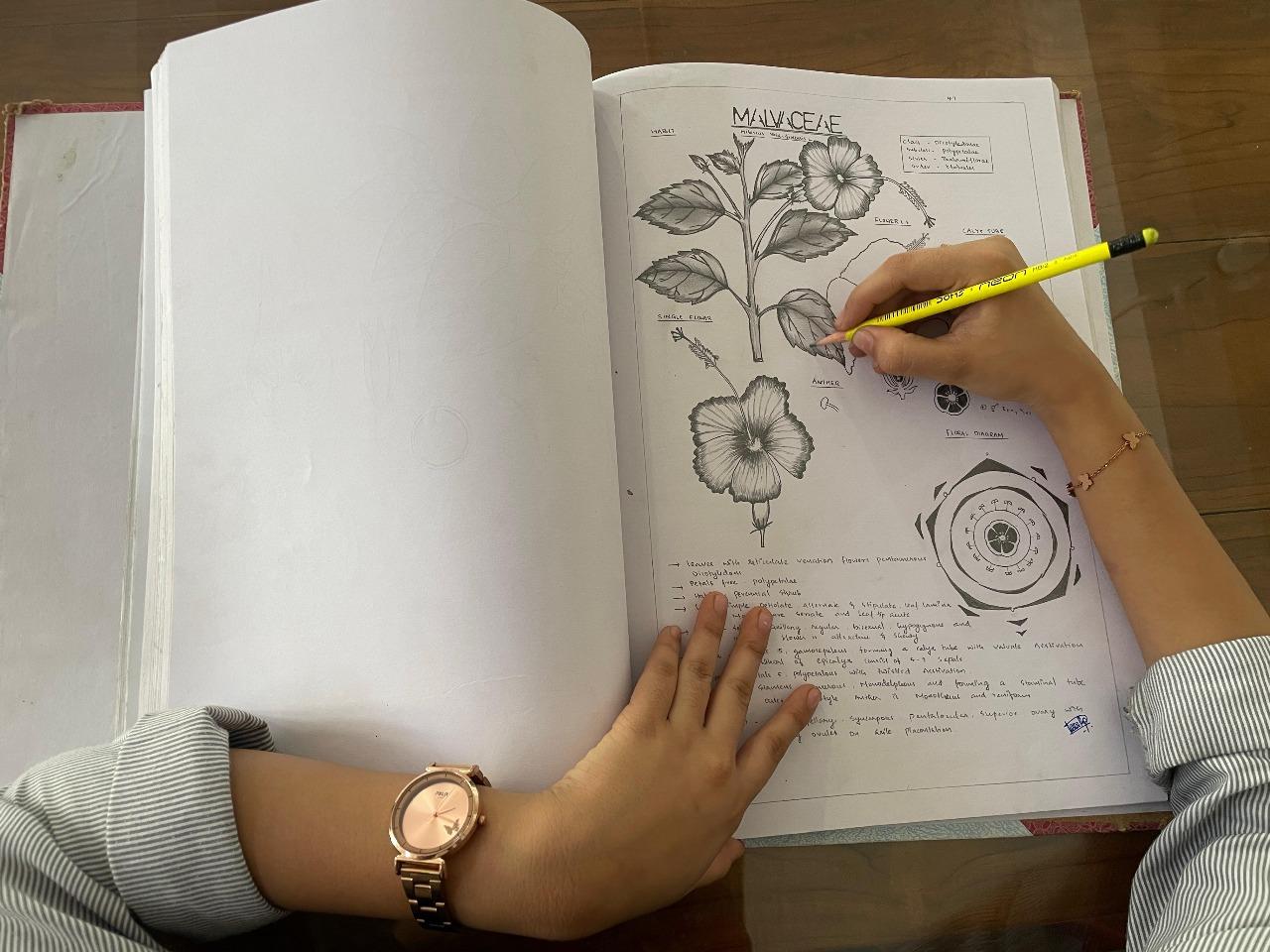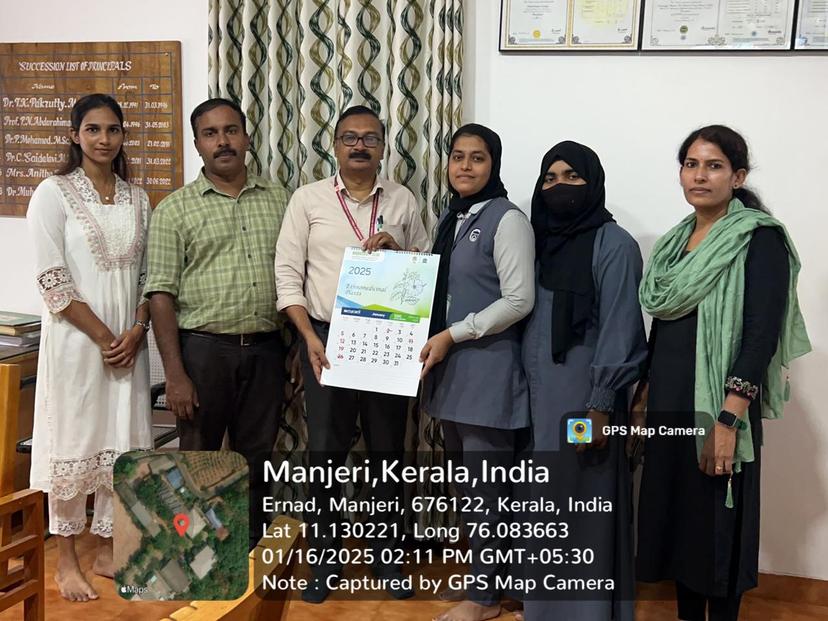RELEASE OF THE 2025 CALENDAR BY THE BIODIVERSITY CLUB

RELEASE OF THE 2025 CALENDAR BY THE BIODIVERSITY CLUB
On 15th January 2025, the Biodiversity Club of KAHM Unity Women’s College, Manjeri, unveiled its 2025 calendar, a unique compilation highlighting ethnomedicinal plants and key biodiversity conservation day celebrations. This initiative aims to promote awareness of ethnomedicinal plants and their vital role in traditional medicine, offering the public an engaging visual and educational resource. The calendar features 12 beautifully illustrated plants, each chosen for its cultural and medicinal significance. The showcased species include Hibiscus rosa-sinensis, Naragamia alata, Lindernea crustacea, Costus spicatus, Clematis gouriana, Commelina benghalensis, Evolvulus nummularius, Clerodendrum infortunatum, Mimosa pudica, Hyptis suaveolens, Leucas aspera and Catharanthus roseus. Additionally, it highlights monthly environment-focused celebrations, fostering appreciation and action toward biodiversity conservation.
The artistic illustrations of the plants were created by talented students from the MSc Botany program: Nishma (2nd Semester M.Sc. Botany) and Jumana (4th Semester M.Sc. Botany). Their detailed and vibrant depictions have brought the plants to life, capturing their unique characteristics and essence. The calendar was officially handed over to the Principal, Prof. (Dr.) Muhammed Basheer Ummathur, at KAHM Unity Women’s College. The event marked a significant moment for the Biodiversity Club as it highlighted the club’s commitment to promoting awareness about the importance of ethnomedicinal plants and biodiversity conservation.
The calendar serves as both an artistic and educational tool, raising awareness about the diversity of ethnomedicinal plants and their significance in human health and cultural heritage. It is designed to inspire interest and understanding among students, researchers and the general public, fostering an appreciation for biodiversity and traditional knowledge systems.
1.Hibiscus rosa-sinensis (Chinese Hibiscus)
Flowers are used to treat hair loss, dandruff and greying of hair.
Leaves and flowers are used as a poultice for swelling and boils.
Decoctions are consumed for menstrual disorders, cough and bronchial issues.
2.Naragamia alata (Nilanaragam)
Known for its anthelmintic and anti-inflammatory properties.
Used in traditional medicine for treating rheumatism and skin disorders.
Leaves and bark are often used as a remedy for fever.
3.Lindernea crustacea (Hard Slitwort)
The plant is used in traditional medicine for treating digestive disorders.
Known for its potential diuretic properties.
Applied externally for cuts and wounds to prevent infection.
4.Costus spicatus (Spiked Spiral Ginger)
Rhizomes and roots are used to treat urinary tract infections and kidney stones.
A decoction is consumed to regulate blood sugar levels.
Acts as a mild laxative and is used in digestive ailments.
5.Clematis gouriana (Indian Traveller’s Joy)
Leaves and roots are used for their anti-inflammatory and analgesic properties.
Employed in treating arthritis, rheumatism and muscular pain.
Applied as a paste for skin eruptions and wounds.
6. Commelina benghalensis (Benghal Dayflower)
Leaves and stems are used for treating burns and wounds.
Known for its diuretic and cooling properties.
Used in the treatment of urinary issues and skin inflammations.
7.Evolvulus nummularius (Roundleaf Bindweed)
Traditionally used for treating epilepsy and convulsions.
Leaves are applied for cuts and skin infections.
Consumed as a decoction for gastrointestinal ailments.
8.Clerodendrum infortunatum (Hill Glory Bower)
Roots and leaves are used for treating fever, jaundice and respiratory conditions.
Known for its antimicrobial and anti-inflammatory effects.
Decoction of roots is used for indigestion and colic.
9.Mimosa pudica (Touch-Me-Not)
Roots are used for treating urinary infections and kidney disorders.
Leaves are applied to wounds to stop bleeding.
Known for its sedative and anti-inflammatory properties.
10.Hyptis suaveolens (Bush Mint)
Leaves are used to treat fever, cold and respiratory conditions.
Decoctions are consumed as a remedy for stomach disorders.
Known for its mosquito-repellent properties.
11.Leucas aspera (Thumbai)
Leaves are used for treating snake bites and insect stings.
Known for its anti-inflammatory and antimicrobial properties.
Decoction is consumed to alleviate colds and coughs.
12.Catharanthus roseus (Periwinkle)
Leaves and stems contain alkaloids (Vincristine & Vinblastine) used in cancer treatments.
Traditionally used to treat diabetes, hypertension and skin infections.
Flowers are employed as a remedy for eye irritation.


